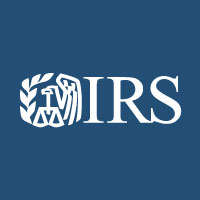
Late last night, the Internal Revenue Service imposed documentation requirements on employers whose employees want to take advantage of the paid sick leave benefits of the Families First Coronavirus Response Act (“FFCRA”). In total, the IRS posted 66 questions and answers — most of which dealt with the nuts-and-bolts of obtaining the federal tax credits that pay for the leave. Here is a link to the questions and answers: IRS Q&A Employers must pay special attention to questions 44, 45 and 46.
Those questions and answers impose very specific documentation requirements on employers and employees. I have developed a couple of forms to satisfy those requirements. If you would like a copy please e-mail me at: rlockwood@wilmerlee.com
For any type of COVID-19 paid leave, the employee must provide a written request with:
- The employee’s name;
- The date or dates for which leave is requested;
- A statement of the COVID-19 related reason the employee is requesting leave and written support for such reason; and
- A statement that the employee is unable to work, including by means of telework, for such reason.
Most of my clients are anticipating leave requests based upon an employee’s need for child care. The IRS’s documentation rules for child care-related leave impose two new restrictions. First, “special circumstances” must exist to grant leave to care for a child over the age of 14. Unfortunately, the IRS does not clarify what types of “special circumstances” qualify. Second, no other person can provide care for the child during the period in which the employee is receiving leave. In total, the employee must provide the following information in writing:
- The name and age of the child/children to be cared for;
- The name of the school that has closed or the place of care that is unavailable;
- A representation that no other person will be providing for the child during the period for which the employee is receiving leave; and,
- A statement that special circumstances exist requiring the employee to provide care for child older than 14 during daylight hours.
The FFCRA also provides 80 hours of Emergency Paid Sick Leave for employees who are directly dealing with a diagnosis of COVID-19. More detail on the quarantine/symptoms/care for quarantine can be found in this earlier blog: Paid Leave for Coronavirus The IRS’s questions and answer specify the documentation required for that leave:
- The name of the governmental entity ordering quarantine; or, the name of the health-care professional advising self-quarantine; and,
- If the employee is seeking leave to care for an individual who has been quarantined or advised to self-quarantine — the name of the individual being cared for and their relation to the employee.
As if the foregoing documentation requirements weren’t enough, the IRS also requires employers to maintain documentation supporting the amount of paid leave provided. Those requirements are found in question 45. In total, there are four types of documents that must be maintained, but the most significant is: “Documentation to show how the employer determined the amount of qualified sick and family leave wages paid to employees that are eligible for credit, including records of work, telework and qualify sick leave and qualified family leave.” Again, the IRS provides no guidance on the types of documentation that will suffice. At a minimum, if an employer allows an employee to telework for part of the day, the employer should require some type of time sheet or other documentation of hours worked.
Finally, question 46 makes clear that employers must maintain all of the foregoing paperwork for at least four years after the date any applicable payroll tax becomes due or is paid, whichever is later.